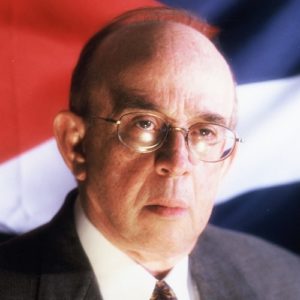Cuba and sugar have been tied inseparable in history. There is an old saying that synthetizes this relationship “Sin azúcar no hay país.” The Cuban economy was radically dependent of the sugar price market fluctuations with profound implications for Cubans’ financial wellbeing. This close relationship was acutely enhanced by the boom and bust market volatility of 1920.
In November 1920, after six years of unprecedent prosperity in which Cuba became the biggest sugar producer in the world, the demand and price swiftly decreased as Europe’s beet sugar fields and factories recovered from WWI’s (1914-1918) devastation. “The Dance of the Millions” in Cuba was over. For the sugar industry it was a catastrophe.
On July 1914, a month before the outbreak of the War in Europe, the sugar price was at 1.93 cents per pound. In August it rose to 3.66 cents per pound. In addition, the market demand for Cuban sugar increased as the sugar beet production regions of Europe suffered the wreckage of the battlefields and the peasants joined the war.
As a result, Cuba’s sugar industry flourished. A year later (1915), the output reached over 2,600,000 tons and increased its share of world production from 2.7% in 1900 to 15.4% in 1915. It also dominated the U.S. sugar market. In addition, England turned to Cuba for its sugar needs. During the war, England bought 2,500,000 tons of sugar from Cuba. To control rising prices, the Allied Powers created the “Sugar Equalization Board” fixing the price at 4.6 cents per pound of raw sugar. (This price control ended in 1920)
With a growing demand for sugar, Cuba’s economic future looked brighter than ever. With the prospect of excellent returns, American capital flew to Cuba to buy land for cane fields and to build new and larger “centrales.” During the war years, 25 modern mills were built, making Cuba the sugar emporium of the world.
Cuba’s society was dazzled by the economic prosperity of the sugar golden years. More than 50,000 “colonos” were among the Cubans who expanded their land holding, paying off old debts, showing off their wealth and living the good life of financial success. Cuba was experiencing an extraordinary economic bonanza.
The construction industry was also thriving, with elegant homes being built in the Vedado and Miramar fashionable suburbs in Havana. Wealthy Cubans recreated Gothic, Italian Renaissance and French classical architectural styles. The Country Club suburb had beautiful mansions.
Strict banking procedures were ignored. Many huge loans went unsecured. Among the most prominent entrepreneurs was José López Rodríguez, known as “El Gallego Pote,” a well-known developer of Miramar, who was given millions of unsecured loans.
Hugh Thomas wrote: “The rest of 1920 was passed, day by day, in a dream-like atmosphere, more reminiscent of a film comedy than real life.” On June 28, 1920, the Wall Street Journal wrote: “The ‘Paseo del Prado’ boulevard was packed with cars like New York’s Fifth Avenue.” The impact of the sugar bonanza was felt throughout the island.
Without price control, loose lending by banks stimulated speculation. On May 20, 1920, the price of sugar reached 22.5 cents per pound and then abruptly, like an unexpected bolt of lightning, plummeted. By November 18, the price hit 4 ¾ cents per pound. (The price collapse had taken 7 months). In December it had fallen to less than 3 cents per pound.
Many mill owners, colonos, and sugar speculators that had borrowed on the sale of the next harvest could not meet their bank obligations. In turn, the banks that had departed from sound loan procedures were now unable to collect on their loans and became insolvent. Fearing the worst, the people rushed to take out their savings. A run on banks took place, and panic took hold of the devastated Cuban financial system.
It was an economic catastrophe. By the summer of 1921, 20 banks had collapsed. Some bankers and sugar speculators fled the island; others like Pote Rodriguez hung themselves. The Cuban-owned banks were the hardest hit, while foreign banks, with their solid monetary reserves, were able to weather the storm.
Fortunately for the Cuban people, the U.S. market for sugar increased and the price stabilized around 3.75 cents per pound, which was higher than the average price between 1885 and 1914. At the end, the “Dance of the Millions” created a legacy of a city beautiful that contributed to the magic splendor of Havana.
*Pedro Roig is Executive Director of the Cuban Studies Institute. Roig is an attorney and historian that has written several books, including the Death of a Dream: A History of Cuba. He is a veteran of the Brigade 2506.








